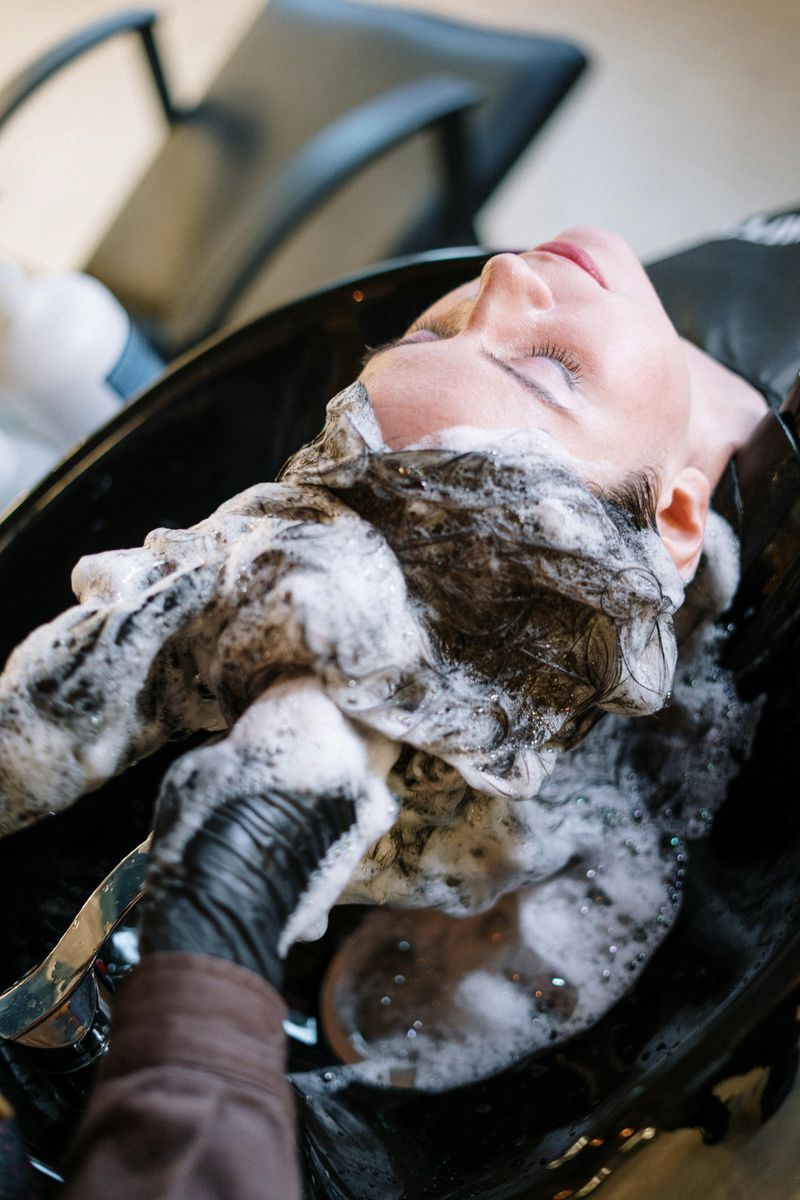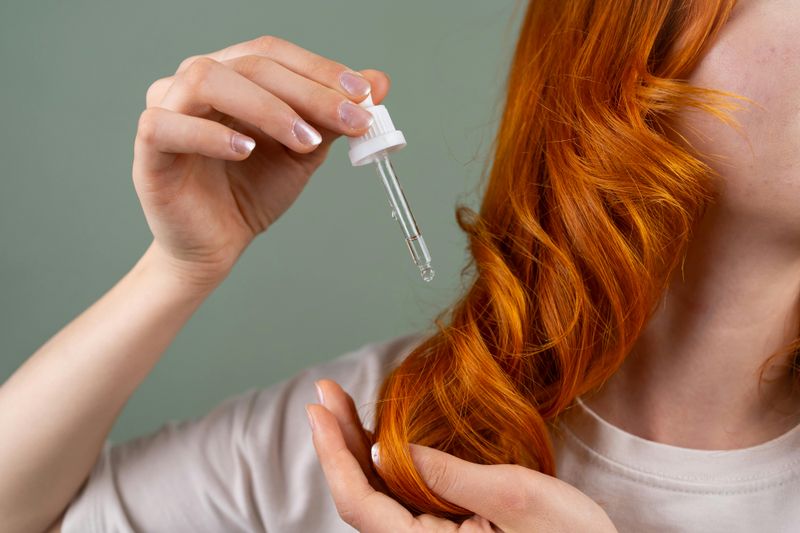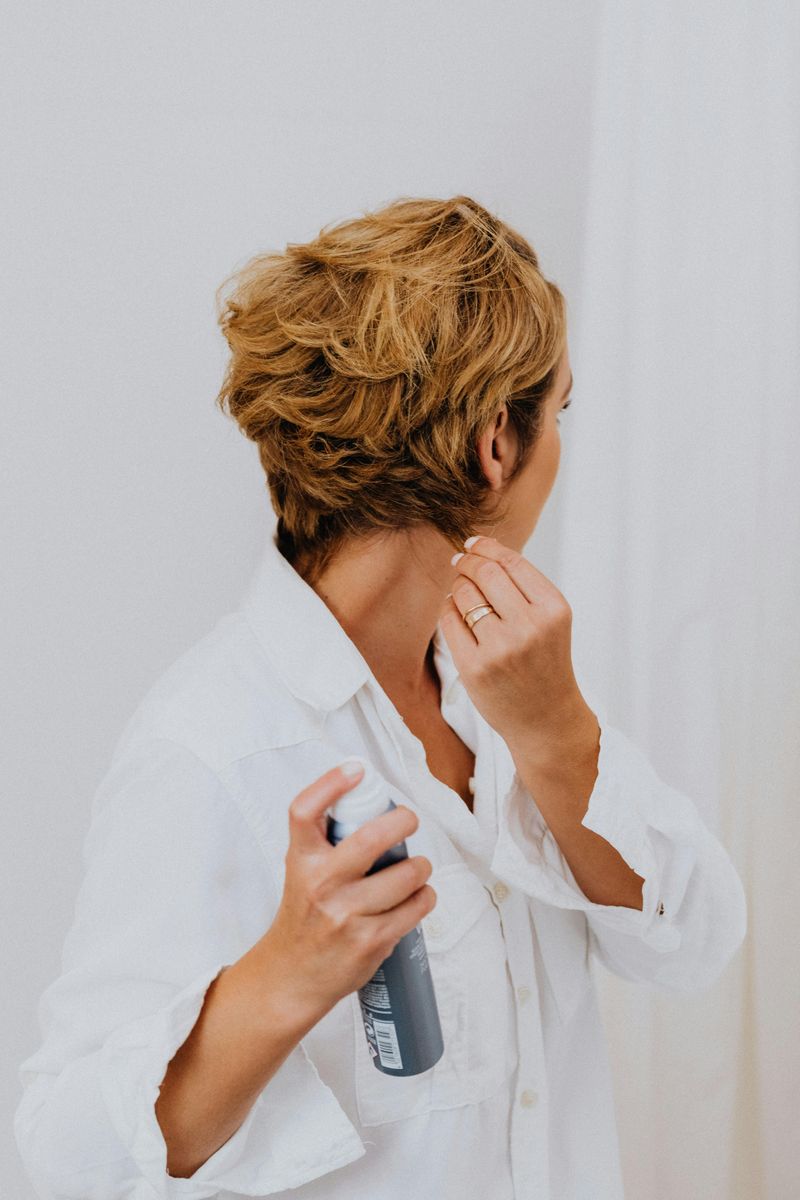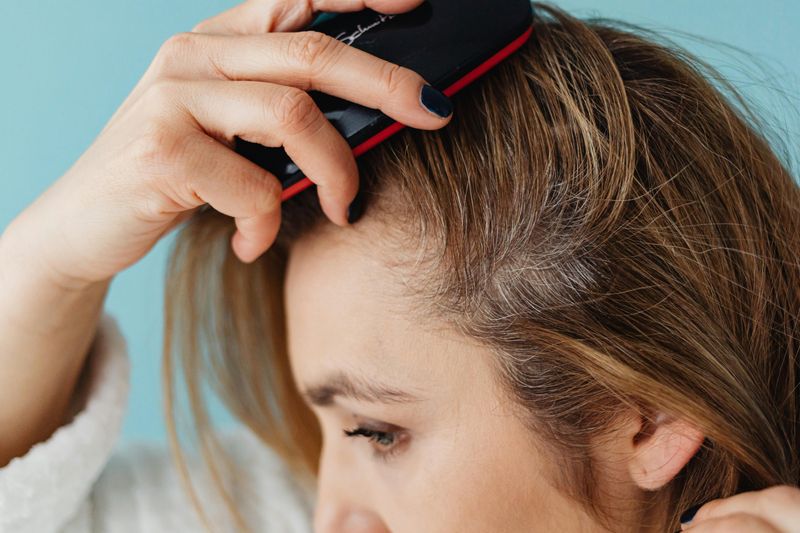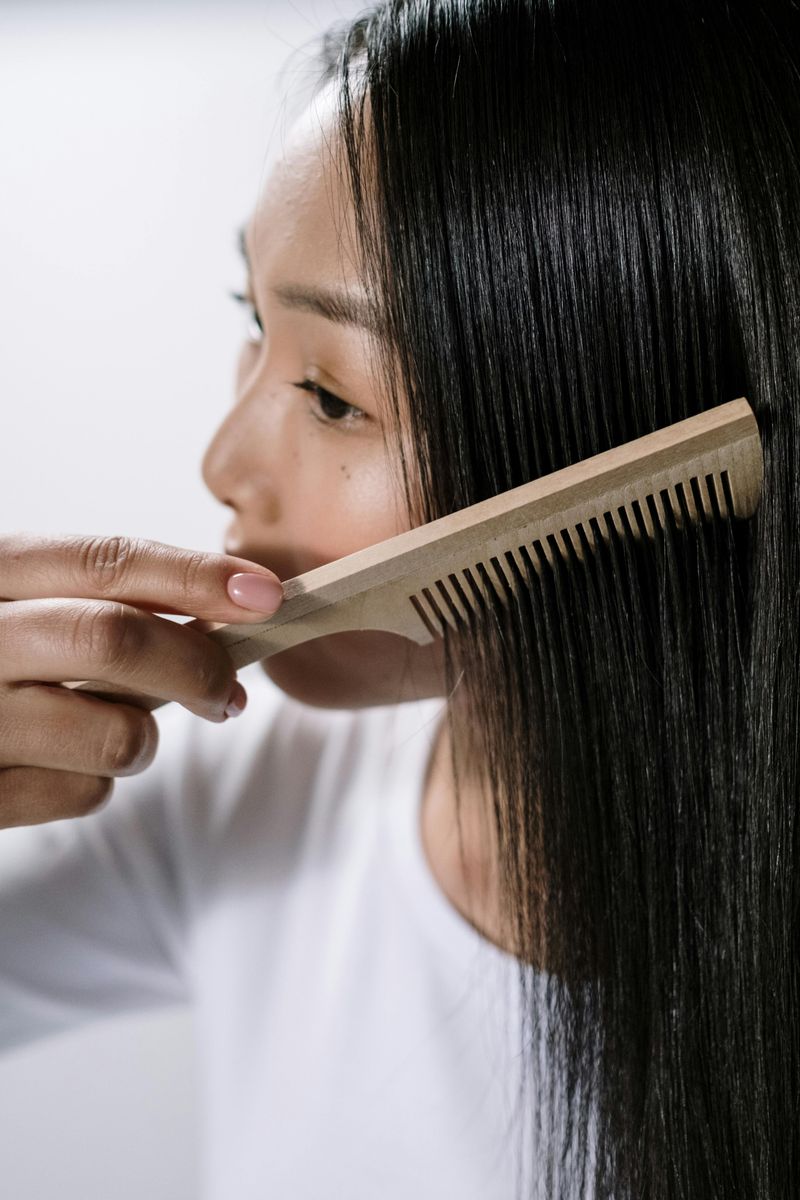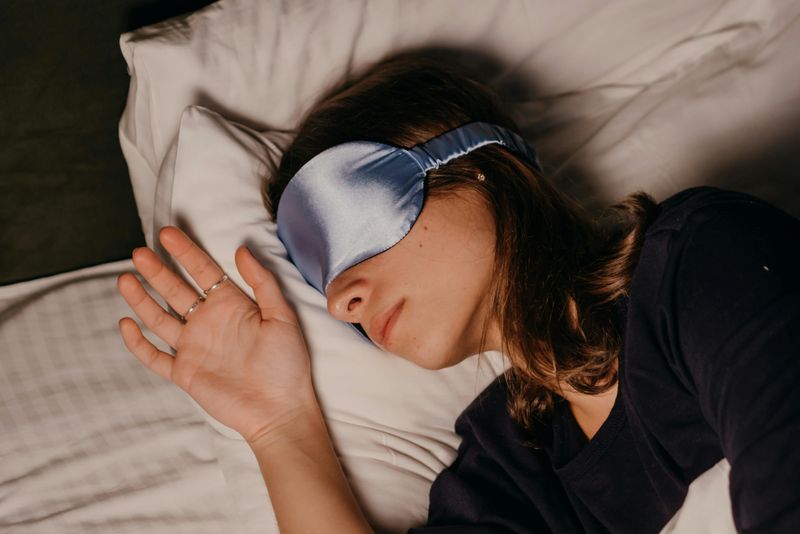Hair changes as we age, and women over 40 know this better than anyone. Texture shifts, growth slows, and what once worked might not anymore. But here’s the good news: the right habits can keep your hair looking healthy, vibrant, and full of life.
These aren’t complicated routines or expensive treatments—just smart, sustainable practices that real women swear by every single day.
1. Drinking Plenty of Water Daily
Hydration starts from the inside out. Your hair follicles need moisture to produce strong, resilient strands, and nothing delivers that better than good old water. Most women over 40 who maintain gorgeous hair make drinking water a non-negotiable part of their day.
Aim for at least eight glasses daily. When your body is properly hydrated, your scalp stays healthier and your hair looks shinier. Dehydration can make hair brittle and prone to breakage.
Keep a reusable bottle nearby as a reminder. Small sips throughout the day add up quickly. Your hair will thank you with improved texture and bounce you can actually see and feel.
2. Eating a Protein-Rich, Balanced Diet
Hair is made of protein, so it makes sense that eating enough of it keeps strands strong. Women who prioritize lean meats, fish, eggs, beans, and nuts often notice their hair grows thicker and breaks less easily. Omega-3 fatty acids from salmon or flaxseeds add shine and reduce inflammation around follicles.
Vitamins matter too. Iron supports circulation to the scalp, while biotin and vitamin E encourage growth and repair. A deficiency in any of these can lead to thinning or dullness.
Think of your plate as fuel for your follicles. Colorful vegetables, whole grains, and healthy fats create the perfect environment for hair to thrive naturally and beautifully.
3. Choosing Sulfate-Free, Gentle Shampoos
Harsh shampoos strip away natural oils that mature hair desperately needs. Sulfates create that satisfying lather, but they can leave your scalp dry and your strands feeling like straw. Women who’ve made the switch to gentler formulas notice softer, more manageable hair almost immediately.
Look for labels that say sulfate-free or moisturizing. These products clean effectively without overdoing it. They’re especially helpful if you have color-treated or chemically processed hair.
Your scalp produces less oil as you age. Using a mild shampoo helps maintain that delicate balance, keeping your hair clean without robbing it of essential moisture it can’t easily replace.
4. Conditioning Regularly and Using Weekly Masks
Never skip conditioner—it’s not optional anymore. After 40, hair needs extra moisture to stay elastic and prevent breakage. Conditioning after every wash seals the cuticle and locks in hydration, making hair smoother and easier to style.
Once a week, treat yourself to a deep-conditioning mask. These intensive treatments penetrate deeper than regular conditioner, repairing damage from heat, sun, and everyday wear. Leave it on for at least 10 minutes for best results.
Think of masks as a spa day for your strands. They restore softness, add shine, and make detangling a breeze. Consistency is key—your hair will look healthier with each passing week.
5. Protecting Hair from Heat Damage
Heat styling can be tempting, but it’s also one of the fastest ways to damage aging hair. Women who keep their hair healthy know that air-drying whenever possible is a game-changer. When you must use heat, always apply a protectant spray first.
Lower the temperature settings on your tools. High heat isn’t necessary for most styles and causes unnecessary harm. Even reducing it by 20 degrees makes a difference over time.
Embrace your natural texture on some days. Giving your hair regular breaks from blow dryers and flat irons helps it recover and maintain its strength, bounce, and overall vitality beautifully.
6. Maintaining a Healthy, Clean Scalp
Healthy hair grows from a healthy scalp. Buildup from products, oil, and dead skin can clog follicles and slow growth. Women who exfoliate their scalps monthly or use clarifying treatments notice improved hair quality and less itchiness.
Scalp massages are another secret weapon. Spending just five minutes massaging increases blood flow, delivering nutrients directly to the roots. Use your fingertips in gentle circular motions.
Don’t ignore signs like flaking or irritation. Address them quickly with targeted treatments. A clean, balanced scalp creates the ideal foundation for strong, beautiful hair that grows consistently and looks its absolute best.
7. Getting Regular Trims Every 6-8 Weeks
Split ends don’t heal themselves—they just travel up the hair shaft, causing more damage. Regular trims every six to eight weeks remove those damaged tips and keep your hair looking polished and healthy. It’s preventative maintenance that really works.
Many women resist cutting their hair when trying to grow it longer. But ironically, skipping trims can slow growth because breakage keeps canceling out length gains.
Even just a quarter-inch trim makes a visible difference. Your ends look fresher, your style holds better, and your hair feels smoother. Think of it as an investment in long-term hair health and beauty.
8. Avoiding Tight Hairstyles and Reducing Tension
Constantly pulling your hair back tightly can lead to traction alopecia, a type of hair loss caused by repeated stress on the follicles. High ponytails, tight buns, and braids might look sleek, but they come at a cost. Women who care about their hair choose looser styles instead.
Switch to scrunchies or fabric-covered elastics. These create less friction and tension than traditional rubber bands. Position ponytails lower on your head to reduce pulling at the hairline.
Give your hair days off from styling altogether. Letting it hang loose or wearing it down relieves pressure and allows follicles to recover fully and naturally.
9. Using a Wide-Tooth Comb for Detangling
Wet hair is fragile and prone to breakage. Raking through it with a regular brush can snap strands and create split ends. Smart women reach for a wide-tooth comb instead, starting from the ends and working upward slowly and patiently.
This method minimizes damage and preserves length. The wider spacing between teeth glides through tangles without yanking or tearing. It’s especially important after conditioning when hair is most vulnerable.
Be gentle and take your time. Rushing through detangling causes unnecessary stress on already delicate hair. A little patience now prevents a lot of damage and frustration down the road.
10. Managing Stress and Prioritizing Sleep
Stress wreaks havoc on your entire body, including your hair. High cortisol levels can push follicles into a resting phase, leading to increased shedding and slower growth. Women who manage stress through yoga, meditation, or hobbies often see improvements in hair thickness.
Sleep is equally critical. During deep sleep, your body repairs cells, including those in your scalp and hair follicles. Aim for seven to nine hours nightly for optimal results.
Create a calming bedtime routine. Turn off screens early, keep your room cool, and consider a silk pillowcase to reduce friction while you sleep peacefully through the night.
11. Shielding Hair from Sun and Environmental Damage
UV rays don’t just damage your skin—they also fade hair color, weaken protein structures, and make strands dry and brittle. Women who spend time outdoors protect their hair with hats, scarves, or UV-protectant sprays designed specifically for hair care.
Chlorine and saltwater are equally harsh. Rinse your hair immediately after swimming and apply a leave-in conditioner. These simple steps prevent dryness and color fading.
Cold, windy weather can also cause breakage. Cover your hair during winter months and avoid overwashing, which strips protective oils. Shielding your hair from the elements keeps it strong, vibrant, and resilient year-round.



